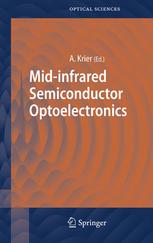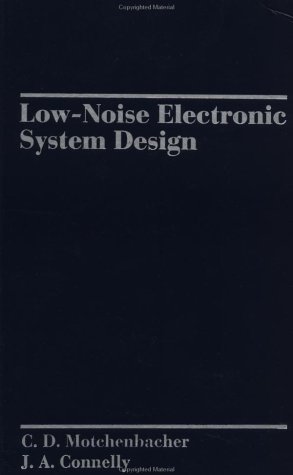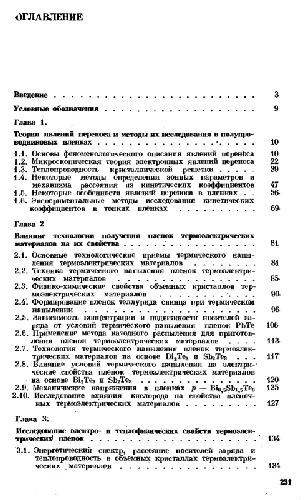J. T. Olesberg, M. E. Flatté (auth.), Anthony Krier PhD (eds.)9781846282096, 1846282098, 184628208X, 9781846282089
The practical realisation of optoelectronic devices operating in the 2–10 µm (mid-infrared) wavelength range offers potential applications in a variety of areas from environmental gas monitoring around oil rigs and landfill sites to the detection of pharmaceuticals, particularly narcotics. In addition, an atmospheric transmission window exists between 3 µm and 5 µm that enables free-space optical communications, thermal imaging applications and the development of infrared measures for “homeland security”. Consequently, the mid-infrared is very attractive for the development of sensitive optical sensor instrumentation.
Unfortunately, the nature of the likely applications dictates stringent requirements in terms of laser operation, miniaturisation and cost that are difficult to meet. Many of the necessary improvements are linked to a better ability to fabricate and to understand the optoelectronic properties of suitable high-quality epitaxial materials and device structures. Substantial progress in these matters is presented here.
Mid-infrared Semiconductor Optoelectronics is an overview of the current status and technological development in this rapidly emerging area. It is composed of four parts. First, the basic physics and some of the main problems facing the design engineer (together with a comparison of possible solutions) are laid out. Next, there is a consideration of the multifarious lasers used as sources for mid-infrared technology, including an inspection of current approaches to the lack of such a source in the 3–4 µm region. Part III reviews recent work in light-emitting diodes and detectors and also deals with negative luminescence. The final part of the book is concerned with applications and highlights, once more, the diversity and technological importance of the mid-infrared spectral region.
With a world-wide authorship of experts working in a number of different mid-infrared-related fields Mid-infrared Semiconductor Optoelectronics will be an invaluable reference for researchers and graduate students drawn from backgrounds in physics, electronic and electrical engineering and materials science. Its breadth and thoroughness also make it an excellent starting point for further research and investigation.
Table of contents :
Front Matter….Pages 1-1
Theory of Mid-wavelength Infrared Laser Active Regions: Intrinsic Properties and Design Strategies….Pages 3-92
Band Structure and High-pressure Measurements….Pages 93-127
Front Matter….Pages 129-129
III-Sb-based Type-I QW Diode Lasers….Pages 131-157
VCSELs Emitting in the 2–3 µm Wavelength Range….Pages 159-188
Antimonide Type-II “W” Lasers….Pages 189-217
Interface Lasers with Asymmetric Band Offset Confinement….Pages 219-236
IV–VI Semiconductors for Mid-infrared Optoelectronic Devices….Pages 237-264
Mid-infrared Vertical Cavity Surface Emitting Lasers based on the Lead Salt Compounds….Pages 265-301
Optically Pumped MIR Lasers….Pages 303-322
Mid-infrared Quantum Cascade Lasers….Pages 323-355
Front Matter….Pages 357-357
Mid-infrared Electroluminescence in LEDs Based on InAs and Related Alloys….Pages 359-394
LED-Photodiode Opto-pairs….Pages 395-428
QWIP Detectors for the MWIR….Pages 429-452
Negative Luminescence….Pages 453-485
Mid-infrared Quantum Dot Photodetectors….Pages 487-513
Quantum Photovoltaic Devices Based on Antimony Compound Semiconductors….Pages 515-545
High-speed Avalanche Photodiodes for the 2–5 µm Spectral Range….Pages 547-592
Front Matter….Pages 593-593
Infrared Methods for Gas Detection….Pages 595-613
Mid-infrared Biomedical Applications….Pages 615-634
Development of Infrared Countermeasure Technology and Systems….Pages 635-671
Front Matter….Pages 593-593
Survey of Thermophotovoltaic (TPV) Devices….Pages 673-738







Reviews
There are no reviews yet.